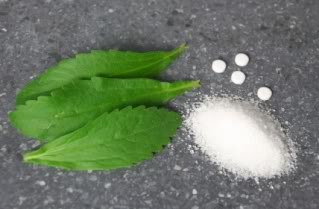“Everything in food works together to create health or disease. The more we think that a single chemical characterizes a whole food, the more we stray into idiocy.” T. Colin Campbell
Welcome back. The thing that got me back into writing was helping people. I know too many people who did not have access to answers to important questions. Todays subject is one of the most debated, often leaving us with more questions than answers. We are looking at sweeteners with good reason. The United States is the worlds largest consumer of sweeteners, including high fructose corn syrup. Besides ranking as one of the largest global sugar producers, it is one of the few countries with a significant output of both sugarbeets and sugarcane. It is also among the largest sugar importers. The consumptions of Diet Coke has become so popular as to where it has beaten Pepsi and is the second most popular drink in the United States. We have so many options available to us now it begs the questions; Which one do we chose, which one is the best for optimal health? This consumption of sweeteners has effected our waistlines, being a large contributor to the obesity epidemic we are all facing.
Lets look at the major players in the sweetener game I am sure you are familiar with them. But maybe not familiar with the inherent risks they pose to your health. The players are Sugar, Aspartame, Sucralose, Aceslulfame-K, and Stevia. The first one up is Sugar. The single largest calorie source for Americans comes from sugar, specifically High fructose corn syrup. In 2009, more than 50% of all Americans consume one half pound of sugar per day, this amounts to 180 pounds of sugar a year. The most well known side effect of sugar is cavities. The other side effects of sugar are increased risk of diabetes, heart disease and high cholesterol. The Journal of American Medical Association has found a link between eating high amounts of sugar and higher cholesterol levels and diabetes. It also increases acne and general inflammation. Since studies have shown that cancer cells run primarily on glucose, it only makes sense to regulate sugar intake to prevent cancerous cells from forming or at least to stop them from spreading.
Aspartame is a synthetic chemical composed of three ingredients two amino acids and a methyl ester bond, it is made of Phenylalanine, aspartic acid ad methanol. When it is in the body it metabolizes into formaldehyde and wood alcohol, the body also cannot eliminate aspartame the normal way. The massive quantities of the amino acids bonded with a poison are not found in nature. This results in aspartame becoming a neurotoxin. By its unnatural structure the body processes the amino acids differently then a steak or eggs. These amino acids attack your cells, crossing the blood brain barrier attacking your brain cells, creating toxic cellular overstimulation called excitotoxicity. MSG is an excitotoxicity which will work synergistically with aspartame to cause even further damage to your brain cells.
Sucralose is a synthetic chemical created in a laboratory, three chlorine molecules are added to one sucrose molecule. In natural foods chloride is connected with ionic bonds that dissociate easily. In Sucralose, they’re in a covalent bond that does not dissociate. There are not covalent chloride bonds to organic compounds in nature, they only exist in synthetic man-made form. Other examples are DDT, PCB's and Agent Orange. A covalent bond is a chemical bond formed when electrons are shared between two atoms. Usually each atom contributes one electron to form a pair of electrons that are shared by both atoms. Since the compound is not found in nature our body does not know how to break it down, so it is supposed to pass through our system. Research has shown that it does not, it is absorbed into the digestive system, it is stored in the body. The side effects of Sucralose is that it destroys the gut microflora. Studies have shown a decrease in red blood cells, increased infertility in men by interfering with sperm production, vitality and in high doses brain lesions, enlarged and calcified kidneys. The were two studies performed before the FDA approving Sucralose for human consumption. This consisted of 36 participants eight were men. Whats really galling is the studies lasted all of four days.
Aceslulfame-K is a potassium salt containing methylene chloride, a known carcinogen. The reported side effects are nausea, headaches, mood problems, impairment of the liver and kidneys, problems with eyesight and possibly cancer. Aceslulfame-K may contribute to hypoglycemia. It has undergone the least amount of scientific scrutiny even though early studies showed a potential link between the sweetener and the development of multiple cancers.
Stevia is a natural sweetener that has been used for centuries in Paraguay and in Japan for decades. The Japanese have been using it in the treatment of type 2 diabetics, there is evidence that stevia is an insulin sensitizer that can aid in glucose tolerance and clearance after a meal. A two year randomized, placebo-controlled study of Chinese patients with mild hypertension (which a rather large swath of society probably suffers from) found that oral stevioside intake significantly reduced systolic and diastolic blood pressure. Patients either took a 500 mg capsule of stevioside or a placebo three times a day for two years. The hypertension situation improved all around and no downsides were reported or detected. Also of note is the fact that slightly more patients in the placebo group developed left ventricular hypertrophy, a pathological thickening of the heart muscle.
It looks like Stevia is the clear choice here, it has positive benefits without the high risks. Just like everything else it should be taken in moderation. Some people complain about the taste of Stevia, you will need to experiment with the different types and brands that may work for your.







No comments:
Post a Comment